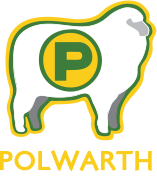Early History
Settlement of the founding breeders
The Dennis brothers, Alexander, William and John emigrated from Cornwall, England to Australia in 1839 with the aim of taking up farming pursuits. After landing in Melbourne in early 1840 they moved to Tasmania, however, their enquiries soon led them back to the western district of Victoria. After buying some 600 well-bred sheep (Saxon Merinos), the Dennis brothers re-crossed Bass Strait and landed at Point Henry, Geelong. After several weeks in the Warrion area, the brothers heard about the Matson brothers who occupied a station east of the Colac lake and who wanted to sell out. The Dennis brothers purchased their sheep and right of occupation to the crown lands. They named the property ‘Tarnd-warn-coort’, a native name for the locality describing the resemblance of the low, undulating hills to the jumps made by the local marsupial bandicoot .
The Three Foundation Flocks
Some years after settling at Tarndwarncoort, the Dennis brothers purchased sheep and the rights to ‘Carr’s Plains’ located on the Richardson River north of Stawell. Carr’s Plains ran a merino flock which from 1960 was managed by Holford H. Wettenhall who married Mary, a daughter of Alexander Dennis. Later, Holford H. Wettenhall leased Carr’s Plains from the Estate of Alexander Dennis and around 1887 decided to establish a fixed comeback flock which he named ‘Ideals’. In the disastrous drought of 1902, Carr’s Plains moved 10,000 Ideals by foot to Portland and shipped them across to agistment in Tasmania. When the drought broke, many of the agistment properties requested that the sheep remain in Tasmania. These became the founding flocks in Tasmania.
In 1867, Alexander and William Dennis purchased ‘Eeyeuk’ station near Mortlake and Noorat. At that time ‘Eeyeuk’ carried a flock of high grade Lincoln sheep.
Tarndwarncoort, Eeyeuk and Carr’s Plains, were later owned by the sons and son-in-law of Alexander Dennis. Almost simultaneously they commenced breeding a fixed comeback type of sheep, using the same Merino and Lincoln strains and proportions.
The Polwarth Name
By 1919, the three original flocks had become well established after 25 years of consistent breeding. The evenness of sheep were catching the attention of other astute sheepman, however the sheep still had no name. Mostly they were known as ‘Dennis Comebacks’ or just ‘comebacks’. This did not apply to H.H. Wettenhall (Carr’s Plains) who had the foresight to call his sheep ‘Ideals’. With the formation of the association, the sheep were named ‘Polwarth’ after the Country of Polwarth in which Tarndwarncoort is located.
Formation of the Association
The Polwarth Sheep Breeders Association of Australia was formed in Melbourne in 1919 by the first breeders who were keen to register their sheep as a fixed breed. Those who attended the first gathering were Messrs U. Ramsay (Turkeith), J.H. Murray (Brie Brie), W.J. Dennis (Uondo), G.L. Dennis (Eeyeuk), J.F. Jelbart (Stony Park East), J.V. Dennis (Korongee), A.W. Dennis (Tarndwarncoort), A.L. Wettenhall (Melbourne Solicitor). Mr Alexander Dennis of Eeyeuk was named President and Mr A.L. Wettenhall was Secretary.
Early prominent flocks
Prominent early flocks in Victoria were ‘Turkeith’, Birregurra (Mr Urquhart Ramsay), ‘Brie Brie’, Glenthompson (Mr J.N. Murray), ‘Jellalabad’, Darlington (Messrs Dowling, Cunningham & Co.) and ‘Endfield’, Camperdown (Mr W.M. McDowall), ‘Barbreck’, Birregurra (A.J. Campbell & Sons) and ‘Gala’, Lismore (E. Currie & Son). In New South Wales, the Jelbart brothers were the pioneer breeders and later, T. and A. Kendall’s stud, ‘Glendoon’ at Henty. Tasmanian pioneer breeders were Messrs Bisdee Bros. of ‘Hutton Park’ and B.H. Edgell of ‘Dennistoun’, Bothwell.
Acknowledgement
Content for the early history obtained from:
Dennis, Noel C. R., 1982, Polwarth Sheep 1880-1980, Ballarat, Victoria, Waller & Chester



